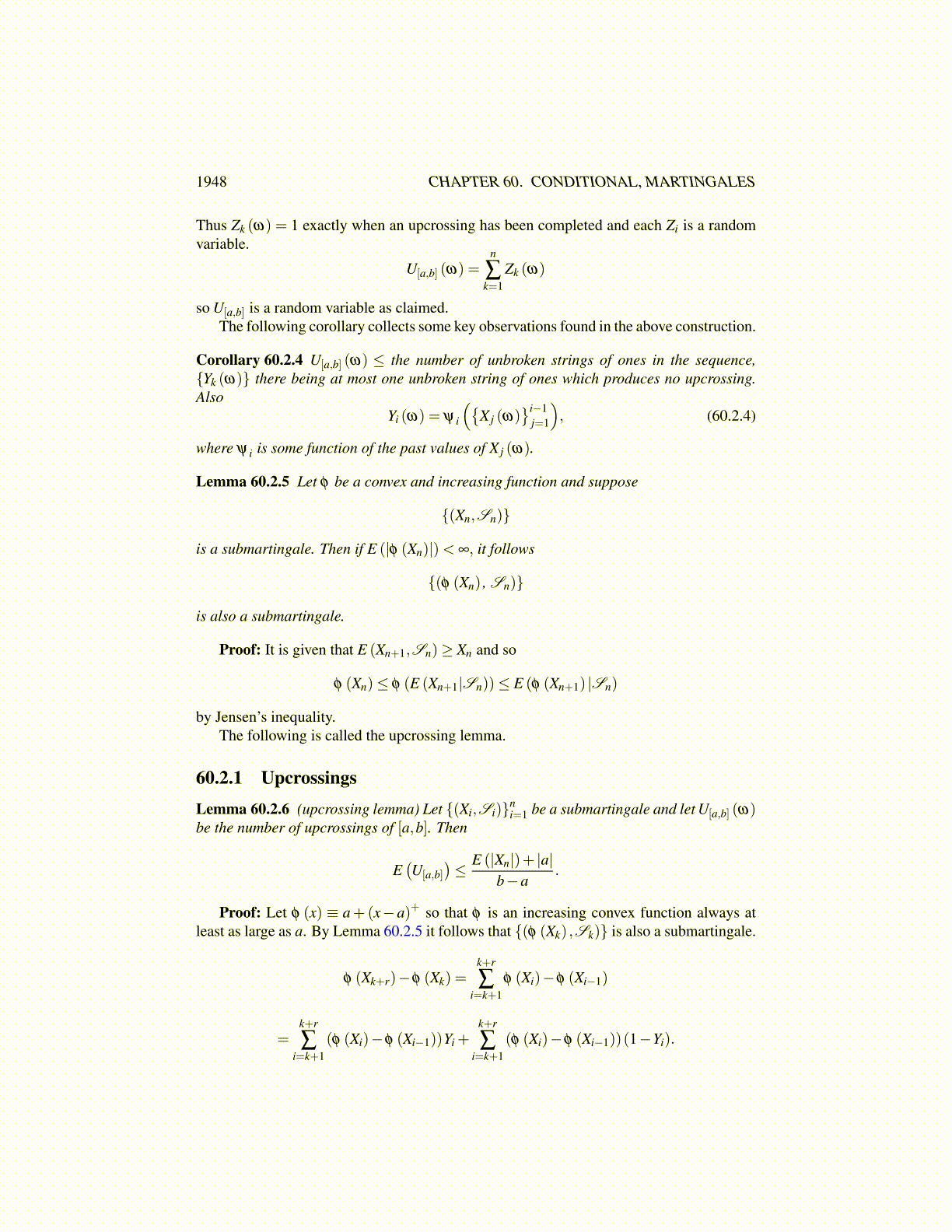
1948 CHAPTER 60. CONDITIONAL, MARTINGALES
Lemma 60.1.5 If X ≤ Y, then E (X |S )≤ E (Y |S ) a.e. Also
X → E (X |S )
is linear.
Proof: Let A ∈S . ∫A
E (X |S )dP≡∫
AXdP
≤∫
AY dP≡
∫A
E (Y |S )dP.
Hence E (X |S )≤ E (Y |S ) a.e. as claimed. It is obvious X → E (X |S ) is linear.
Theorem 60.1.6 (Jensen’s inequality)Let X (ω) ∈ I and let φ : I→ R be convex. Suppose
E (|X |) ,E (|φ (X)|)< ∞.
Thenφ (E (X |S ))≤ E (φ (X) |S ).
Proof: Let φ (x) = sup{anx+bn}. Letting A ∈S ,
1P(A)
∫A
E (X |S )dP =1
P(A)
∫A
XdP ∈ I a.e.
whenever P(A) ̸= 0. Hence E (X |S )(ω) ∈ I a.e. and so it makes sense to considerφ (E (X |S )). Now
anE (X |S )+bn = E (anX +bn|S )≤ E (φ (X) |S ).
Thussup{anE (X |S )+bn}
= φ (E (X |S ))≤ E (φ (X) |S ) a.e.
60.2 Discrete MartingalesDefinition 60.2.1 Let Sk be an increasing sequence of σ algebras which are subsets of Sand Xk be a sequence of real-valued random variables with E (|Xk|)< ∞ such that Xk is Skmeasurable. Then this sequence is called a martingale if
E (Xk+1|Sk) = Xk,
a submartingale ifE (Xk+1|Sk)≥ Xk,
and a supermartingale ifE (Xk+1|Sk)≤ Xk.
Saying that Xk is Sk measurable is referred to by saying {Xk} is adapted to Sk.